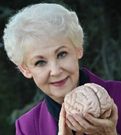Positive Payoff
© Arlene R. Taylor, PhD
www.ArleneTaylor.org
 When I booted up my computer, the first email read:
When I booted up my computer, the first email read:
I am so confused. Some say it’s important to get vaccinated. Other say it’s a hoax. I know you have a Master’s in Epidemiology. What is the real deal?
Good question. No magic wand exists to verify the “real deal.” Each brain on the planet is different and likely has its own definition of any so-called real deal. As the writer of the question indicated, however, two ‘camps’ exist, each with its own perspective.
It reminds me of the Germ Theory debates. Many have heard of Louis Pasteur after whom the term pasteurization was coined. Convinced that germs make you sick, Pasteur’s approach was to mount a war against them: kill them before they kill you. In “Pasteur vs Béchamp: The germ theory debate,” K. Raines pointed out that in his single-minded focus on his germ theory that disease involves “a simple interaction between specific microorganisms and a host,” Pasteur ignored the host and discounted the influence of environmental factors or what today would be known as Epigenetics (everything that is not genetics).
Fewer have heard of Pasteur’s contemporary, Antoine Béchamp. While he acknowledged the reality of germs, he believed that generally the body’s internal environment determines whether the organisms make you sick or kill you. In a pathogenic germ invasion, your lifestyle would either provide a strong defense or a germ-friendly environment. Since Béchamp’s theory required ongoing choices related to personal lifestyle, it was greeted with less than enthusiasm.
Like so much in history (and life in general), instead of looking at the probability that a combination of both approaches could be a winner, the prevailing culture decided it was “one or the other.” Reportedly, as members of the scientific and medical communities hurried to take sides, debates raged hot and heavy. Pasteur's “war on germs” brought a potentially much higher financial payoff—and he had connections. If germs cause diseases, then develop drugs to kill the germs, patent the drugs, and make money! More germs...more patented drugs...more money.
Béchamp’s work offered little or no perceived financial value to investors. He advocated eating nourishing foods to keep the body in a healthy acid-alkaline balance, managing stress, and getting appropriate exercise. Recent studies have shown the impact of other lifestyle choices: obtaining adequate sleep, avoiding dehydration, minimizing the intake of refined sugar and other processed foods, and so on. Non-patentable remedies, all. “Follow the money” is a truism. An entire industry of pharmaceutical drugs emerged based on Pasteur's “germ theory.” Make no mistake, because of pharmaceutical inventions, many are alive today. Many more would likely have avoided illness and disease altogether if Antoine Béchamp’s “environment theory” had also been embraced.
A couple of centuries down the line from these two researchers, science has identified many pathogens—“germs,” e.g., bacteria, fungi, and viruses, including the coronavirus family. Estimates are that more than a third of a million viruses can attack human beings. Unlike many pathogenic organisms, viruses live inside human cells. Antibiotics do not “kill” viruses. Moreover, viruses often change their structure. This can occur spontaneously as when viruses make mistakes copying and replicating themselves, a process known as mutation. Sometimes the viral structure is altered due to exposure to chemicals or drugs or other organisms.
Such mutations or other changes can be minor or can substantially alter the organism, making it difficult to develop vaccines or other treatments to combat them. Influenza viruses, for example, mutate so frequently that last year’s vaccine is ineffective against this year’s strains. Even when vaccines are created, tested, and made available for use, they are not 100 percent effective. There are also risk-factor contributors, such as age, blood type, race, individual immune system function, underlying chronic illnesses—and lifestyle factors. Even when and/or if COVID-19 wanes, it is highly probable that another variant or a new coronavirus may spring up.
According to CNN’s Madaline Holcombe, as of September 15, 2021, 1 in every 500 people in America has died of a COVID-19 related illness. It goes without saying that prevention trumps cure—if one even exists. Fortunately, science has made major advances in terms of preventive lifestyle improvement strategies. There is no room for fear-based panic that can suppress immune system function and make it easier for an organism to create havoc inside the human brain and body. But there is plenty of room for prudence!
Avoid or minimize exposure to potentially harmful organisms. Use appropriate protective equipment consistently. Be proactive in terms of preventive and treatment strategies, and enthusiastically create and maintain a Longevity Lifestyle that supports a healthier internal brain-body environment—one that is not ‘germ friendly.’
It is not “one or the other,” not Pasteur or Béchamp. Together they can yield a positive payoff.

